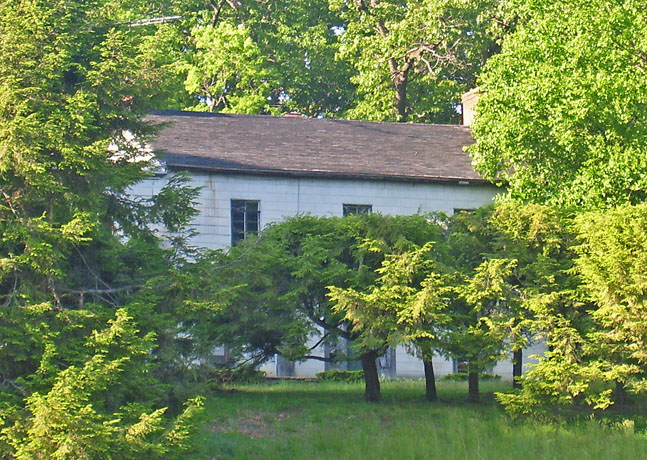- West Point Foundry
Infobox nrhp
name = West Point Foundry
nrhp_type = hd

caption = The house of William Kemble, one of the company's founders, seen from the parking lot of the Cold Spring Metro-North station
location = Cold Spring, NY
nearest_city = Beacon
lat_degrees = 41
lat_minutes = 24
lat_seconds = 51
lat_direction = N
long_degrees = 73
long_minutes = 57
long_seconds = 22
long_direction = W
area = 87 acres (35 ha)
built = 1817
architect =
architecture =
added = 1973
visitation_num =
visitation_year =
refnum = 73001250
mpsub =
governing_body = Scenic HudsonThe West Point Foundry was an early ironworks inCold Spring, New York that operated from 1817 to 1911. Set up to remedy deficiencies in national armaments production after theWar of 1812 , it became most famous for its production ofParrott rifle s and other munitions during the Civil War, although it also manufactured a variety of iron products for civilian use. The rise of steel making and declining demand for cast iron after the Civil War caused it to gradually sink into bankruptcy and cease operations in the early 20th Century.Founding and early products
The impetus for its creation came from
James Madison , who, after theWar of 1812 , wanted to establish domestic foundries to produceartillery . Cold Spring was an ideal site: timber for charcoal was abundant, there were many local iron mines, and the nearby Margaret's Brook provided water power to drive machinery. The site was guarded byWest Point , across theHudson River , and the river provided facile shipping for finished products.cite web | url=http://web.archive.org/web/20070629101949/http://www.scenichudson.org/land_pres/wpfp_research.htm | title=History of West Point Foundry (archived) | accessdate=2006-12-14]The West Point Foundry Association was incorporated by
Gouverneur Kemble , a local citizen, and the foundry began operation in 1817. Artillery was tested by firing across the Hudson at the desolate slopes ofStorm King Mountain , which would have to be swept forunexploded ordnance as a result after some of it exploded in a 1999 fire. [cite web | url=http://www.hq.usace.army.mil/cepa/pubs/apr01/story7.htm | title=Corps of Engineers Cleanup Projects | accessdate=2006-12-14] The platform used for mounting artillery for proofing was uncovered duringSuperfund work in the early 1990s.cite web | url=http://www.cr.nps.gov/archeology/cg/fd_vol7_num2/caliber.htm | title=Foundry Cove Archaeology | accessdate=2006-12-14] Besides artillery, the foundry also produced iron fittings for civilian uses, such as pipe for theNew York City water system and sugar mills for shipment to theWest Indies . A number of earlylocomotive s were built at the foundry, including the "Best Friend of Charleston ", the "West Point", the "DeWitt Clinton", "Phoenix", and "Experiment".Parrott years and the Civil War
In 1835, Captain
Robert Parker Parrott , a West Point graduate, was appointed inspector of ordnance from the foundry. The next year, he resigned his commission and onOctober 31 ,1836 was appointed superintendent of the foundry. It prospered under his tenure, and was the site of numerous experiments with artillery and projectiles, culminating in his invention of theParrott rifle in 1860.cite web | url=http://www.cwartillery.org/parrott.html | title=Robert Parker Parrott | accessdate=2006-12-14] During Parott's tenure, in 1843, the foundry also manufactured USS "Spencer", a revenue cutter which was the first iron ship built in the U.S.The foundry's operations peaked during the Civil War due to military orders: it had a workforce of 1,400 people and produced 2,000 cannon and three million shells. Parrott also invented an
incendiary shell which was used in an 8-inch Parrott rifle (the "Swamp Angel") to bombard Charleston. The fame of the foundry was such thatJules Verne , in his novel "From the Earth to the Moon ", chose it as the contractor for the "Columbiad" spaceship-launching cannon.cite web | url=http://www.westpointfoundry.org/researchnotes.html | title=West Point Foundry Archaeology Project | accessdate=2006-12-14]Decline and archaeology
In 1867, Parrott resigned as superintendent, although he continued to experiment with artillery designs until his death in 1877.cite web | url=http://www.pcnr.com/News/Column/020821_1.html | title=A Village Born of Iron: Trouble in the Ravine | accessdate=2006-12-14] Business at the foundry declined as it faced competition from more modern techniques of iron and steel production. It had discontinued the use of charcoal and begun to import coal from
Pennsylvania around 1870. However, it was unable to stave off receivership in 1884 and bankruptcy in 1889.cite web | url=http://www.pcnr.com/News/Column/010918b.html | title=A Village Born of Iron: A Long Road Ended | accessdate=2006-12-14] It was sold in 1897 to the Cornell brothers, makers of sugar mills, and closed in 1911.Of the buildings on the site, only the central office building remains intact; the rest are in ruins. convert|87|acre|ha around the site form a preserve owned by
Scenic Hudson . [cite web | url=http://www.scenichudson.org/whatyoucando/visitourparks/westpointfoundrypreserve | title=West Point Foundry Preserve | accessdate=2006-12-14] . It can be visited by a short trail from the nearby Cold Spring Metro-North station. A major archaeological study of the site, funded by Scenic Hudson and undertaken byMichigan Tech , is underway.References
External links
* [http://www.westpointfoundry.org/ Archaeological Investigation of West Point Foundry]
Wikimedia Foundation. 2010.
